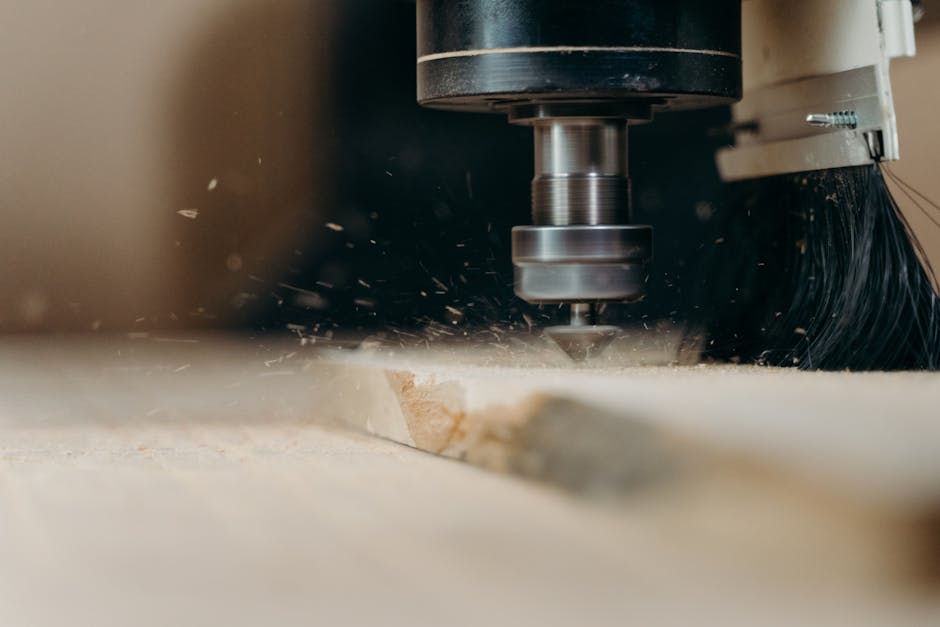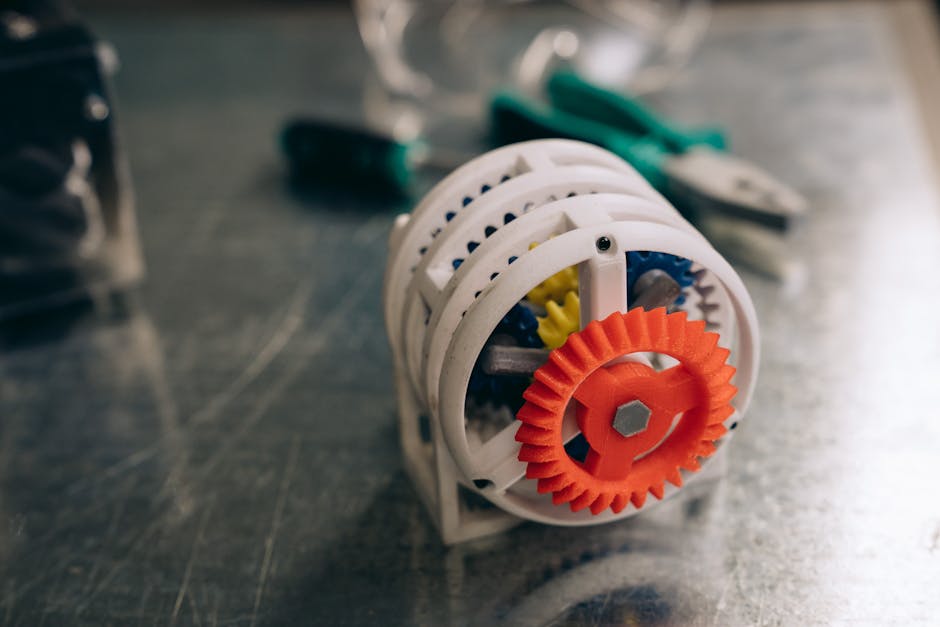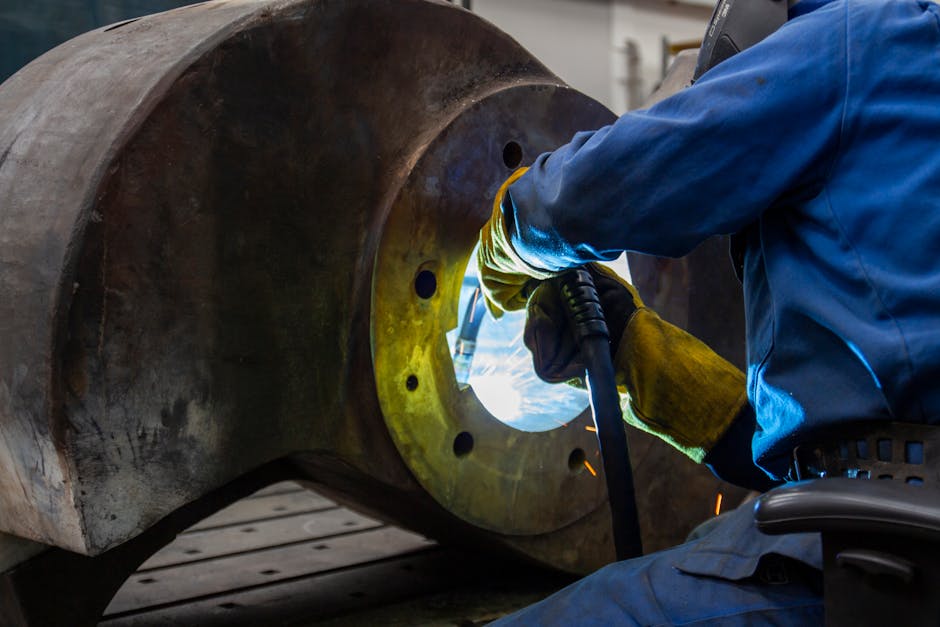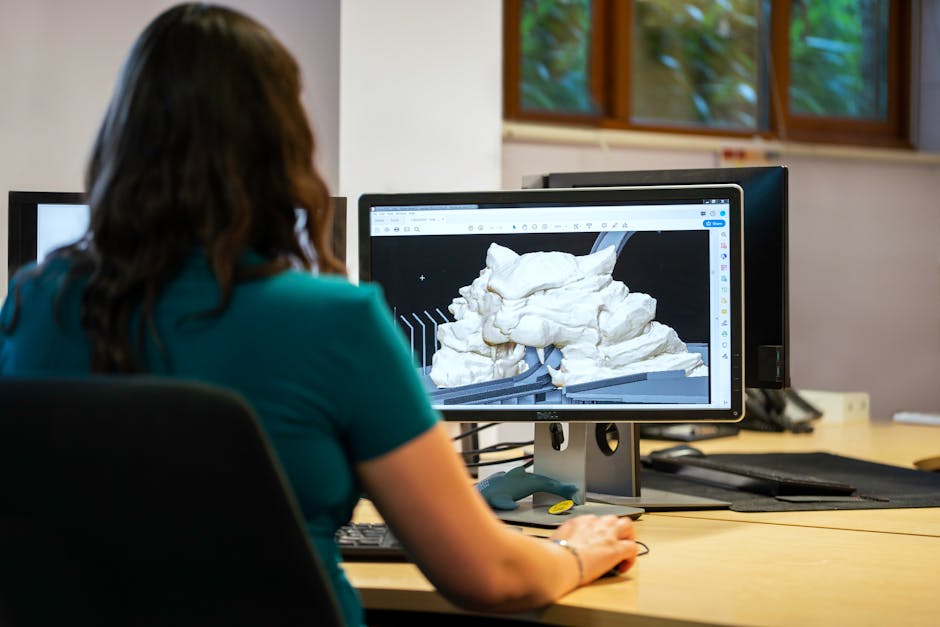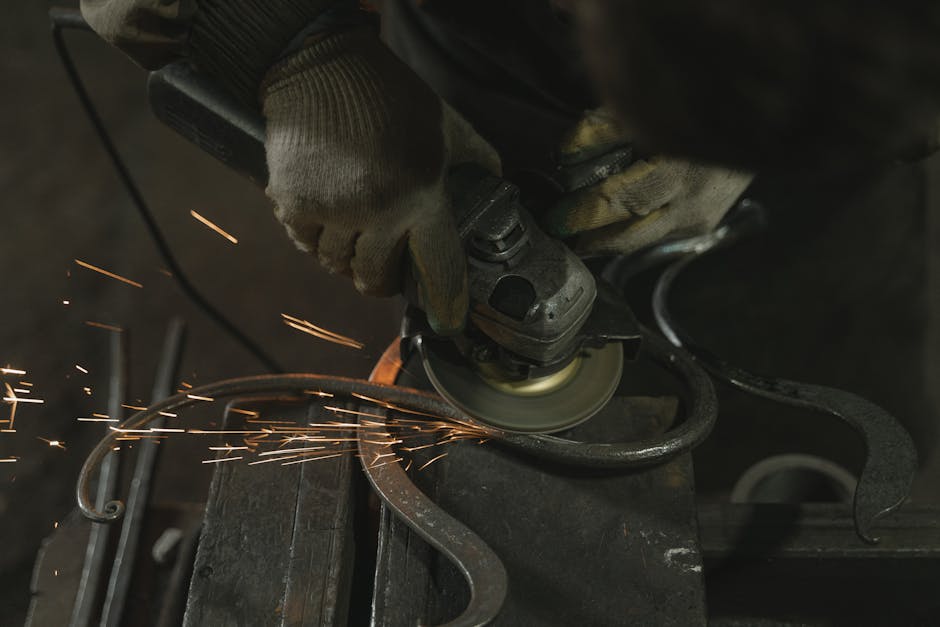CNC Swiss-Type Automatic Lathes are changing the landscape of precision machining. These machines are renowned for their ability to produce small, intricate parts with remarkable accuracy and efficiency. Whether you’re crafting components for the medical industry, automotive sector, or aerospace applications, a Swiss-type lathe could be the key to achieving top-tier precision.
- What is a CNC Swiss-Type Automatic Lathe? It’s a specialized CNC machine designed for precision machined parts. It excels in creating complex geometries with tight tolerances.
- Why choose a Swiss-Type Lathe? For high precision, complexity handling, and efficient production of small parts.
- Typical Industries: Medical, automotive, aerospace, and any field requiring detailed component production.
In CNC precision machining, Swiss-type lathes stand out due to their unique capabilities and versatility. These machines offer solutions that not only improve accuracy but also streamline the production process, making them invaluable for manufacturing companies focused on quality and efficiency.

Quick cnc swiss type automatic lathe terms:
– swiss type cnc lathe
Understanding CNC Swiss-Type Automatic Lathes
Swiss lathes, also known as Swiss screw machines or Swiss turning centers, are at the heart of modern CNC precision machining. They are specifically designed to produce small, intricate parts with best accuracy. These machines are essential in industries like medical, aerospace, and automotive, where precision is non-negotiable.
What Makes Swiss Lathes Unique?
Swiss lathes differ from conventional CNC lathes in several key aspects:
-
Guide Bushing: This component holds the workpiece close to the cutting tool, minimizing deflection and ensuring high precision. This feature is crucial for machining long, slender parts, which are common in precision applications.
-
Sliding Headstock: Unlike conventional lathes, Swiss lathes have a moving headstock. This allows the workpiece to be repositioned along the Z-axis during machining, supporting heavy cuts with precision.
-
Simultaneous Machining: Swiss turning centers can perform multiple operations simultaneously. This capability reduces cycle times and increases productivity, making them ideal for high-volume production of complex parts.
Swiss Screw Machines: Precision and Efficiency
Swiss screw machines, a type of Swiss lathe, are known for their ability to handle tight tolerances and complex geometries. They are equipped with live tooling, enabling operations like cross-drilling and milling without moving the workpiece to a separate machine.
Swiss Turning Centers: Versatile and Adaptable
Swiss turning centers are incredibly versatile, capable of working with a wide range of materials, from stainless steel to polymers. They offer a variety of tooling options, allowing manufacturers to adapt quickly to different production needs.
Key Benefits:
- Precision: Consistently delivers high-quality, precision machined parts.
- Efficiency: Reduces setup time and increases throughput.
- Versatility: Handles a wide array of materials and complex operations.
In summary, CNC Swiss-Type Automatic Lathes are indispensable in precision machining. They offer a combination of precision, efficiency, and versatility that is hard to match, making them a preferred choice for industries demanding high-quality components.
Key Features of CNC Swiss-Type Automatic Lathes
When it comes to CNC Swiss-Type Automatic Lathes, there are a few standout features that make these machines a powerhouse in precision machining.
Guide Bushing
The guide bushing is a critical component. It holds the workpiece close to the cutting tool, reducing deflection and ensuring precision. This feature is crucial when dealing with long, slender parts. The guide bushing allows the material to move smoothly through the machine, maintaining accuracy even during complex operations.
Different materials are used for guide bushings, like carbide and steel, to suit various applications. Choosing the right guide bushing is key to maintaining concentricity and precision.
Tooling Choices
Swiss lathes offer a wide array of tooling choices. This versatility is one of their biggest advantages. Live tooling options enable operations like cross-drilling and milling without needing to move the workpiece to another machine. This integration saves time and maintains accuracy.
The ability to switch tools quickly is a game-changer. It allows manufacturers to adapt to different production needs swiftly, enhancing flexibility and efficiency.
Simultaneous Machining
One of the most impressive features of Swiss lathes is simultaneous machining. These machines can perform multiple operations at once. This capability drastically reduces cycle times and boosts productivity.
Imagine machining a complex part that requires multiple operations—Swiss lathes handle this with ease. By machining different sections of the part simultaneously, you get faster production without sacrificing precision.
Swiss lathes are all about precision, flexibility, and speed. Their unique features make them indispensable for producing high-quality, precision machined parts in industries where accuracy is crucial. We’ll explore some of the top CNC Swiss-Type Automatic Lathes available in the market today.
Top CNC Swiss-Type Automatic Lathes in the Market
When it comes to precision machining, choosing the right CNC Swiss-Type Automatic Lathe can make all the difference. Let’s explore some of the top models available today.
Star SP-20
The Star SP-20 is a standout in Swiss lathes. Known for its modular units, this machine offers remarkable versatility. It’s designed to handle 1-inch diameter materials with ease. The SP-20’s gate-shaped tool post is a unique feature that encircles the guide bush, allowing for precise front-side machining.
With 8 turning tools, a 5-position sleeve holder, and a 7-spindle power-driven tool unit, the SP-20 is equipped for a wide range of operations. You can improve its capabilities with modular units like cross drilling, slotting, and thread whirling. This flexibility makes the SP-20 a great choice for shops that need to quickly adapt to different precision machining tasks.
Tsugami SS20
The Tsugami SS20 is another impressive option. It features the Modular Tool Zone, which allows for best flexibility. This zone makes it easy to replace rotary tools and tool holders, speeding up setup and changeover times. The SS20 excels at simultaneous machining on the main and sub spindles, cutting cycle times dramatically.
One of the SS20’s key advantages is its chucker convertibility. This feature lets you run the lathe without a guide bushing, using drawn bar stock instead. This flexibility reduces material waste and increases shop efficiency. With a maximum bar stock capacity of 20 mm and 6 axes, the SS20 is a robust choice for both long and short part runs.
SD-26 Type S
The SD-26 Type S is known for its advanced capabilities. This machine stands out with its double B-axis design, which allows for complex machining operations. The twin-thread whirling capability is another highlight, enabling the production of intricate parts with high precision.
The SD-26 Type S is designed to handle demanding tasks with ease. Its innovative features make it ideal for industries that require precision machined parts with complex geometries. The combination of the double B-axis and twin-thread whirling provides unparalleled flexibility and precision.
In summary, these top CNC Swiss-Type Automatic Lathes—Star SP-20, Tsugami SS20, and SD-26 Type S—offer exceptional versatility, precision, and efficiency. They are equipped with features that make them suitable for producing high-quality parts in industries where accuracy is paramount. We’ll explore the advantages of these machines in more detail.
Advantages of CNC Swiss-Type Automatic Lathes
When it comes to precision machining, CNC Swiss-Type Automatic Lathes are a game-changer. Their design and capabilities offer several distinct advantages that make them invaluable in the manufacturing world.
Flexibility
One of the standout features of Swiss lathes is their flexibility. Machines like the Tsugami SS20 and Star SP-20 come with modular tool zones that allow for easy swapping of tools. This means you can quickly adapt to different machining tasks without long downtime. The ability to reconfigure for various operations makes these lathes ideal for both long and short production runs.
Versatility
Swiss lathes are not just flexible; they are also incredibly versatile. With features like the double B-axis in the SD-26 Type S, these machines can handle complex machining operations such as thread whirling and polygon cutting. This versatility allows manufacturers to produce a wide range of parts, from simple to highly intricate designs, using a single machine setup.
Precision
Precision is where CNC Swiss-Type Automatic Lathes truly shine. The use of guide bushings ensures that the workpiece remains stable during machining, which minimizes deflection and improves accuracy. This is crucial for industries like medical, aerospace, and automotive, where even the smallest error can have significant consequences. Swiss lathes consistently produce parts with tight tolerances, ensuring high-quality output every time.
Efficiency
Efficiency is another major advantage. Swiss lathes, such as the Tsugami SS20, excel in simultaneous machining on both main and sub spindles. This capability drastically reduces cycle times, allowing for faster production rates without sacrificing quality. Moreover, the chucker convertibility feature in some models reduces material waste, further enhancing operational efficiency.

CNC Swiss-Type Automatic Lathes combine flexibility, versatility, precision, and efficiency to deliver best performance in precision machining. These attributes make them indispensable for industries that demand high-quality, complex parts with rapid turnaround times. We’ll address some common questions about these remarkable machines.
Frequently Asked Questions about CNC Swiss-Type Automatic Lathes
What is a Swiss type automatic lathe?
A Swiss type automatic lathe is a specialized CNC machine designed for creating small, precise parts. Unlike traditional lathes, Swiss lathes use a collet to hold the workpiece, which is often a long bar of material, known as bar stock. The key feature of Swiss lathes is the guide bushing. This component supports the workpiece very close to the cutting tool, reducing deflection and allowing for high precision during machining. Swiss lathes are ideal for industries like medical and aerospace, where accuracy is paramount.
What is the difference between a CNC lathe and a Swiss lathe?
The main difference between a CNC lathe and a Swiss lathe lies in the machining process and design. Swiss lathes use a guide bushing to stabilize the workpiece, enabling precise machining of long, slender parts. In contrast, traditional CNC lathes do not have this feature and are better suited for shorter, more robust pieces. Additionally, Swiss lathes often have more tooling choices, allowing for simultaneous operations and complex part geometries. This makes them a preferred choice for intricate tasks requiring high precision.
What is a CNC Swiss operator?
A CNC Swiss operator is a skilled professional responsible for running and maintaining Swiss turning centers. They must have a strong understanding of programming to set up the machine for different tasks. This includes loading the CNC program, setting tool offsets, and ensuring the machine operates smoothly. Quality maintenance is another crucial aspect of their role. Operators must regularly check the parts being produced to ensure they meet the required specifications, adjusting machine settings as needed to maintain high standards. Their expertise ensures that precision machined parts are produced efficiently and accurately.
Conclusion
At TMC Technologies, we pride ourselves on delivering high-quality CNC components that meet the exacting standards of industries like aerospace, automotive, and medical manufacturing. Our expertise in CNC precision machining allows us to produce parts with unparalleled accuracy and consistency.
One of our core strengths is our ability to offer custom applications custom to your specific requirements. Whether you need intricate components for a medical device or high-speed production parts for the automotive sector, our advanced CNC Swiss-type automatic lathes are up to the task. These machines are designed to handle complex geometries and tight tolerances, ensuring that every part we produce is of the highest quality.
Our commitment to innovation and excellence ensures that we stay at the forefront of the precision machining industry. By leveraging the capabilities of CNC Swiss-type automatic lathes, we help our clients achieve greater efficiency, flexibility, and precision in their manufacturing processes.
Let us be your partner in success. Find how TMC Technologies can lift your production with our top-tier CNC solutions. Explore our CNC Swiss Machine Shops to learn more about how we can support your operations.
